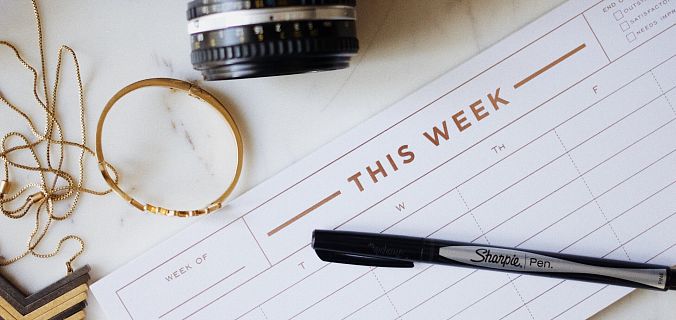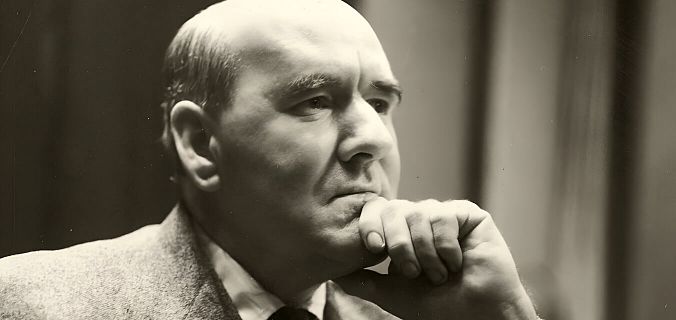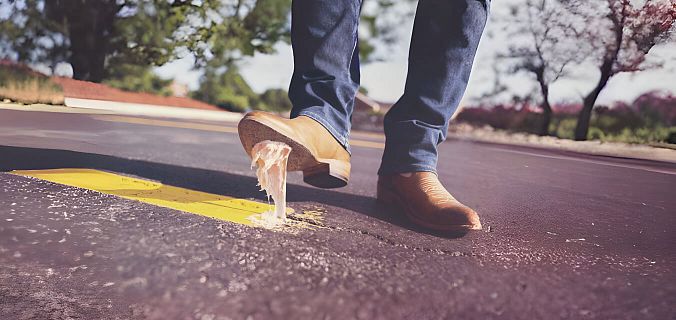But often people plan only their working time, and their personal time remains in chaos. They think that in their free time, they should cast off the burden of planners and play by ear. Then, they say, they will have a real rest. They won’t! In this article we will tell why it’s important to plan your personal time, how to do it without any problems, and what applications can help.
Why you need to plan your personal time
The working day is over, now it’s the weekend or vacation, but you shouldn’t hurry to throw out the to-do lists yet. There are several reasons:
-
In your free time, you still have things to do
You have to pay the rent and bills on time, check your mail, go shopping, etc. If you keep all this in your head, your brain will be overloaded. You can’t call that rest.
-
Without a plan, time is often wasted
Even if you have already done all your chores and you can take some time for yourself, it is still better to plan it. No strict requirements. The planner is made for the person, not the person for the planner. A task app shouldn’t be your tyrant. But if you don’t make at least a rough plan, there is a good chance you will end up wasting time.
In our modern life, if you do not decide for yourself how and where to spend your free minutes, someone else will decide for you. This "someone else" is social media companies that benefit from your scrolling for hours and watching as many ads as possible; pesky acquaintances who can talk about themselves forever; mass media that hunt for your attention around the clock. Yes, there are a lot of "predators" around who need your time. Therefore, either you plan it yourself, or you lose it. -
If you do not plan your vacation, then you may simply fail to find something to do
Do not protest: "Well, I have thousands of things to do, if only I had some free time!" While you are working, there may be a ton of ideas in your head, like "As soon as I finish my work, I’ll watch that cool TV series. I also need to download a new game, and then I will draw. In the evening it would be nice to take a walk in this park, go to a new pastry shop, to the pool, to the gym" … The list in your mind looms large.As soon as it comes to free time, when you can finally realize your dreams, you have a white cloud of emptiness in your head. No ideas come to mind. First you lay down on the sofa to relax, then you pick up your phone, open social media … and spend an hour, two, three. Before you realize it, you’ve already spent all your free time after work or wasted half of your day off.
Then you start to frantically recall what you wanted to do, trying to save the remaining hours of rest. There are too many options now, you cannot decide which one to grab first, and time is running out. You don’t want to spend it on planning, you rush to do one thing then another. For some activities, you already don’t have enough time, or you are lacking some details that had to be planned in advance.
As a result, the weekend went badly, you managed to do quite a bit of pleasant and useful things, but the rest of the time just flew away with thinking and scrolling through social media. If you ask yourself what you spent 5 or 6 or 10 hours of your weekend on, you won’t even be able to remember. A cherry on top is your household chores that have not been done either, and now you have to squeeze them somehow into other days' plans.

-
You can even postpone pleasant things
Many people think that procrastination is only about unpleasant work tasks. But you may also indefinitely put off activities that bring pleasure. When there is no time allocated for the activity, there is always something to distract you. And the cool things that you have dreamed of all week are again postponed.
-
Without a plan you can’t have a good rest
The main problem is that free time itself does not bring pleasure, though officially you did not work, which means officially you were having a rest. But free time and pleasure are not the same thing at all. Freedom does not mean chaos. If every weekend you just go with the flow, when your free time is over, you will find yourself with nothing: you didn’t find time to do what you had wanted, forgot what you had needed to do; now you have a headache from social media and lying on the couch, and you don’t feel very well.
Personal time can be planned without stress and pressure
The main reason people refuse planning and scheduling the weekend is to relieve stress. You have had enough of all those to-do lists at work, and you want to relax in your free time and forget about everything. Productivity has unpleasant associations: as if someone higher up wants you to be faster, taller, and stronger, but you just want to rest.
It’s time to get rid of this stereotype. Remember that your personal time belongs to you, a plan will only help you spend it as you like. You plan for yourself to go to bed at the end of the day feeling like you’ve done something cool today. Or did nothing at all (if that’s what you had planned).
To spend any time off you have to do some organizational tasks. If you want to go to the park and read a book there, sipping coffee and eating sandwiches — awesome. You need to prepare and pack your lunch in a paper bag, put some gas in your car, and choose an interesting book.

How and when to plan so as not to overload yourself
-
Find some time for planning
Just half an hour or an hour will help you structure your day in advance and have a good rest in the end. This is a good investment. Planning sessions are best done during quiet time in the evening. At this time, you have the opportunity to think of the steps ahead and write them down.
-
Keep a planner or app handy
Write your ideas and desires there. Write down everything that comes to your mind during work hours when you cannot spend time planning. This is your draft for the session. When you have time, come back to it and add subtasks.
-
Plan in accordance with your life rhythm and temperament
Find the most convenient planning frequency for yourself considering all the changes in your life. For some people, it is more convenient to plan everything for the whole week ahead one day, while others need to make changes in their plans every two days.
First, write down what you need to do in your free time in the current month or week. Paying your bills, washing a car, buying food — you should find time for such essential tasks in advance.
Leisure planning depends on your temperament and how active you are. Activities that are exciting and enjoyable should not be limited by strict time frames. For example, you plan to play the guitar for an hour, but after one hour, you feel like playing more. Do not deny yourself your desire for the sake of a strict schedule.
-
Set approximate boundaries for interesting things
The average person begins to lose concentration within 90 minutes of an interesting activity. Allow yourself an hour and a half for one activity with a small break before the next one.
-
Limit the time killers
For example, you know that if you open TicTok or YouTube, it will take three hours of your time. To stop using social media completely is hard task, it is better to take it in small doses. Set the timer and there you go.
-
Make time for tasks that you feel too lazy to do, but that have to be done
Let’s say, you have a pile of dirty dishes in your sink — allocate 20 minutes of your time for this chore. You may think that 20 minutes is not enough, but you really can handle most of this unpleasant task or complete it.
-
Do not schedule every second of your day
You can have a perfect day planned in your mind, but reality will always intervene. Plans like "I get up at 10:00. Taking a shower at 10:30 am and then I’ll have breakfast. At 11:00 I exercise. At 12:00 a Spanish lesson…" are not a wise idea. In our heads, we always have a firm plan. We think that as soon as one thing ends, we can go to another. But in fact, breakfast or shower can take more time, and one hour of exercising can seem too much. And after all these, we may feel too tired to do anything else.
After all, this is your free time, and you can spend it as you like. You can allocate more time for pleasant things instead of rushing to do all your tasks on time. Therefore, the tasks that do not require strict timing can have approximate due time or you can write just a list of tasks without any due time at all!
The minute-by-minute plan makes you feel like a loser or unproductive when you see that you can’t keep your timing. Planning helps you see how many tasks per day you are trying to schedule. And often you can’t handle them, not because you are lazy, but because such a large number of tasks, actually, cannot be done in one day if you are not a robot.
Which is better for making plans: paper or an application?
To make planning a habit, you need simple and convenient tools. You can start with a regular sheet of paper or a diary, if you prefer analog materials. Though a paper planner has several drawbacks:
- It’s not convenient to take it with you everywhere. You can’t put a paper diary in your pocket, it is not easy to use it in your trips (moreover, you always need to have a pen with you).
- You can get confused or lose important records. A search button for the paper notebook has not been invented yet. Besides, sometimes it may be hard to read your own handwriting. If you have this problem, you’d better off using an application.
- No reminders. If you don’t want to have colored stickers with reminders everywhere in your home, the paper planner is not a good option for you.
The application is always in your pocket, you can record any idea while you are doing shopping, visiting friends, or even walking in the street on a rainy day. There are calendars, tags, timers, reminders, searching — a bunch of different functions that will help you not get lost in your own plans. To find your favorite application, you have to try a few. Love at first sight is rare.
Here are some criteria that can help you to find your dream scheduler:
- Ability to create projects, lists, categories. For personal planning, the same services that are used for work tasks are suitable. You can use two services for work and for free time, or you can simply create different projects within one.
- Accessibility from different devices. If the application is for Android or iOS, you will have no problems, for example, with changing phones. We also need web version or desktop application. If your mobile phone is not at hand, you can write the idea into the planner from the computer.
- A simple non-cluttered interface and pleasant design. In order not to be distracted by bright icons, not to get confused with lots of functions and get aesthetic pleasure when the application is started. Or at least not to feel irritated by the excess of different sections. good interface encourages you to open the app more often.
- Easy to use. Now people prefer services that are easy to understand in couple of minutes. Services that cannot be used without twenty-page manuals are not the right choice.
- Additional features that make the process easier. It's great if the application has convenient repetition settings for tasks, built-in timer, calendar that visualizes future tasks, etc.
A short review of 5 planning apps
1. Any.Do
This application has a minimalistic design — the interface is white and blue. It works on Mac, Android, iOS and Chrome. There is fast synchronization between devices: add a task from your phone and it is immediately displayed in the web version. Integration with Google Calendar and iCloud is available.
You can use it either yourself or share tasks and lists with other users.
By default, the app has three lists: personal assignments, work projects, and a shopping list. There is also the "All tasks" list, you can add all your tasks to it, and then distribute them between the lists.

For each task, a card is created, where you can add a tag, reminder, subtasks, notes and files. But task recurrence is available only if you have a paid subscription. The cost of the premium version is $ 59.99 per year, with a free trial period of 7 days.

2. Todoist
You can enjoy the simple design of the application. By default, it has a red and white theme, but there are a few more free ones to try, including a dark one. The functions are easy to understand, it is not cluttered, the icons are neat, and you can intuitively guess their purpose.

When you start the app, you can see three sections: Inbox, Today, and Upcoming (you can view your tasks by due date here). You can add projects with sections inside.

When a task is created, the application recognizes the due date and time from the task name. For example, you create a task "buy paints tomorrow" and it is immediately assigned for tomorrow without the need to enter it manually in the calendar.
You can add a label to the task cards, determine the priority level (there are four of them), add a comment with links and media. Reminders are only available for the paid version. The number of tasks is limited — up to 150 for the free plan and up to 300 for the Pro one.
Todoist uses gamification. You can choose any number of tasks to be your goal for the day and get karma points for every task you finish. You can also level up.

The cost of the Pro version is $ 4 a month (billed monthly) or $ 3 per month (billed yearly). It has advanced features: you can create up to 300 projects, set reminders, share a project with up to 25 people, upload files up to 100 MB, and have more themes.
3. TickTick
When you start the app, you can see only two lists: Inbox and Today. You can add other lists by yourself. In the task cards there are four priority options, and you can add subtasks, files, tags.
 There are no notifications and reminders in the task, you should set them yourself in the profile settings. There are many setting options for notifications and it’s not easy to figure them out on your own.
There are no notifications and reminders in the task, you should set them yourself in the profile settings. There are many setting options for notifications and it’s not easy to figure them out on your own. 
TickTick Premium costs $ 27.99 per year or $ 2.4 per month. The advanced features are a full calendar with tasks, filters, possibility of setting start and end dates for tasks, approximate duration, themes, sounds, etc.
4. Remember the milk
Unlike the applications mentioned above, Remember the milk positions itself as a personal planning tool only. The name speaks for itself: do not forget to buy milk on time!
On registration and on the subscription page, you are welcomed by a cute mascot Bob, and an application icon with a funny cow.

Inside the planner, the design is minimalistic, without a menagerie :). Despite the positioning, the application’s interface has no particular focus on personal planning.

There is no progress measurement, calendar, goals, and attached files. The latter would be useful for personal tasks, but the app creators didn’t add the feature. The Pro account allows you to attach files via Google Drive or Dropbox.
When creating a card with a task, you can add a deadline, repetition, the approximate amount of time it will take, the priority level.
The application is available for Android and iOS, there is also a web version. The premium version has subtasks, colored tags, smart grouping for lists and tasks (sorting by different criteria), and notifications. The annual price is $ 40.
5. SingularityApp
The application design has "space" colors — a dark background, and dark blue / gray / light blue elements.

The interface is quite simple, and the icons are intuitive. There are three folders: Inbox, Today, and Plans. A cat-astronaut meets you in the Inbox :)

In the PRO version, you can add as many projects and subprojects as you want. The free version has a maximum of 10 projects and 5 sections in each project.
A checklist and a list of subtasks can be attached to tasks and subtasks separately (usually in applications, one is replaced by another). There is a percentage progress bar on the checklist.
The Free plan has reminders for all tasks. Another plus is the convenient advanced repeat settings.

Additional features include the Pomodoro timer and focus mode.

There is an interesting option for those who like to work with paper, but also do not want to give up the application: in Singularity, you can create list of tasks and projects, and then print it. In the Pro plan, paper mark recognition is available – for example, you can put check mark next to completed tasks and they will be seen in the application.
You can use the application without registration if you do not need synchronization. The app is available for Android and iOS, there is desktop version. The cost of the Pro plan is $2.99 per month or $29.99 per year. There is free trial period for month (without having to provide credit card info).
Finally
Planning personal time may seem a difficult and weird habit at first, but it will pay off quickly. The "side" effects of it are having a good rest without a head full of thoughts, household chores that get done, and a balance between a productive weekend and "surfing the phone."





